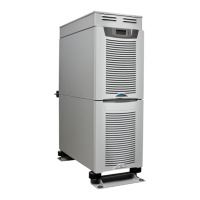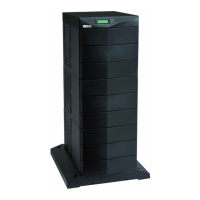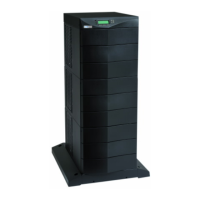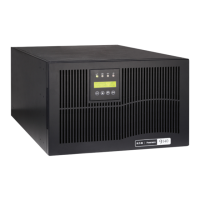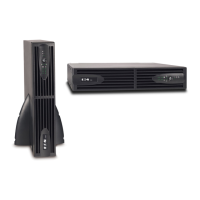8
2.3.1 Installing the UPS (cont.)
3. Isolate the Supply service and secure against reclosing. The Input and Output
Circuit Breakers located at the rear of the UPS must be in the “OFF” position.
4. Connect to the UPS in accordance with Fig 3 for a Single Supply Input or Fig 4 for a
Dual Supply Input.
NOTE: When connecting a Dual Supply Input (i.e. AC Supply with a Separate
Bypass Supply), the pre-installed Jumper between J and A (on the Bypass
Input Terminals) MUST BE REMOVED.
5. The Inverter Shutdown Input is located at the rear of the UPS. When this connection
is open, the Inverter of the UPS will be shutdown. We strongly recommend the use
of an External Maintenance Bypass Switch (MBS). If an MBS is used, connect the
inverter shutdown cable (refer Fig 2 Page 5) to the input at the rear of the unit,
utilising a 1sq. mm. twisted pair screened cable.
6. If computer or alarm connections are required, they should be connected in
accordance with the relevant portion of Section 6 of this manual or in accordance
with the manual provided with the option. These connections are on the rear panel.
2.3.2 Installing External Battery Cabinets
1. External Battery Cabinets should only be connected when the UPS is isolated from
the mains and the load.
2. Connect the External Battery Cabinet to the UPS with the battery cable provided. If
more than one External Battery Cabinet is installed, connect the second Battery
Cabinet to the first Battery Cabinet with the cable provided.
NOTE: If External Battery Cabinets are used, the Battery Pack Quantity and type in
the UPS Parameters should be changed. Do this once the UPS has been started
(refer to Section 5.0, Configuration and to the manual that came with your External
Battery Pack).

